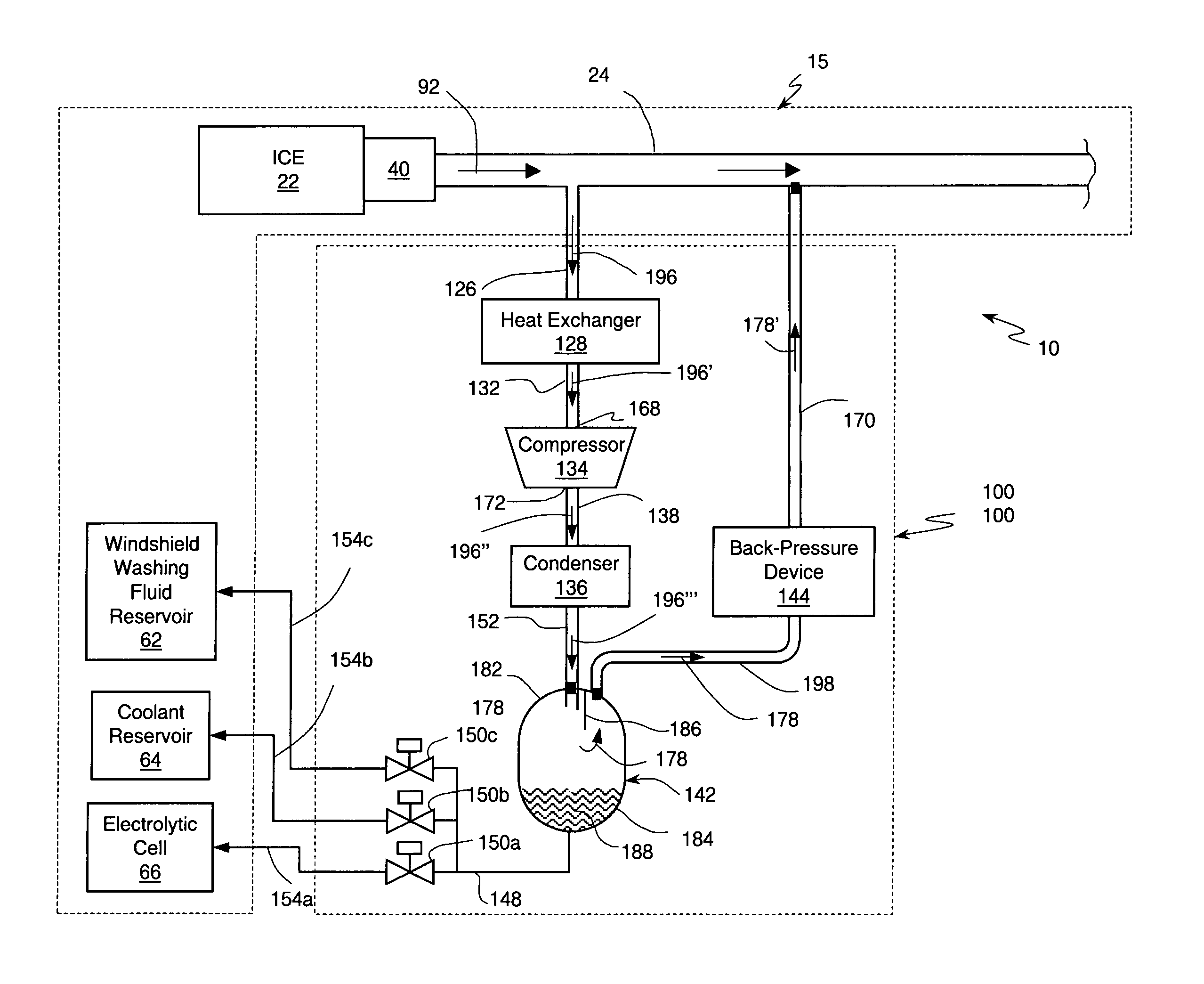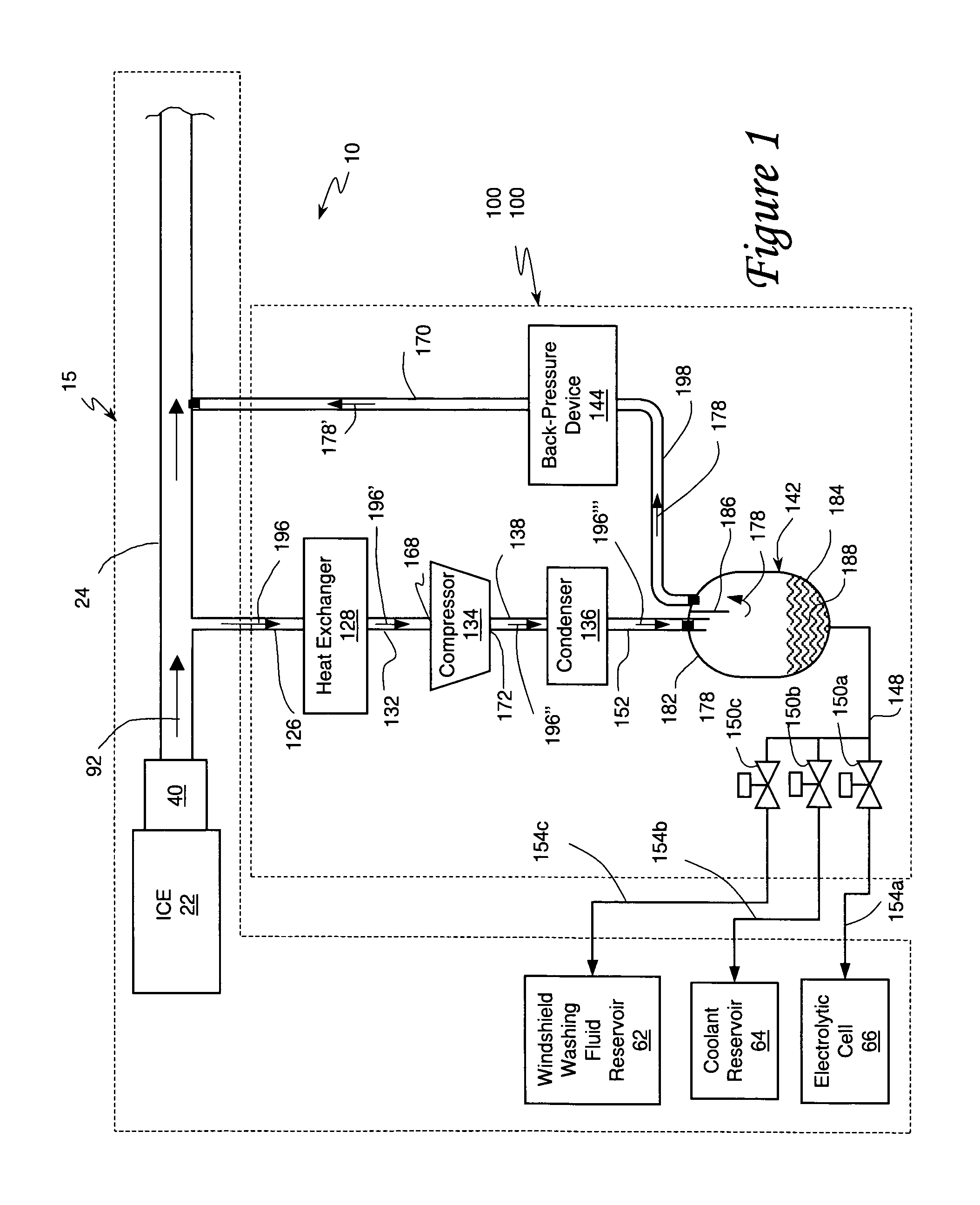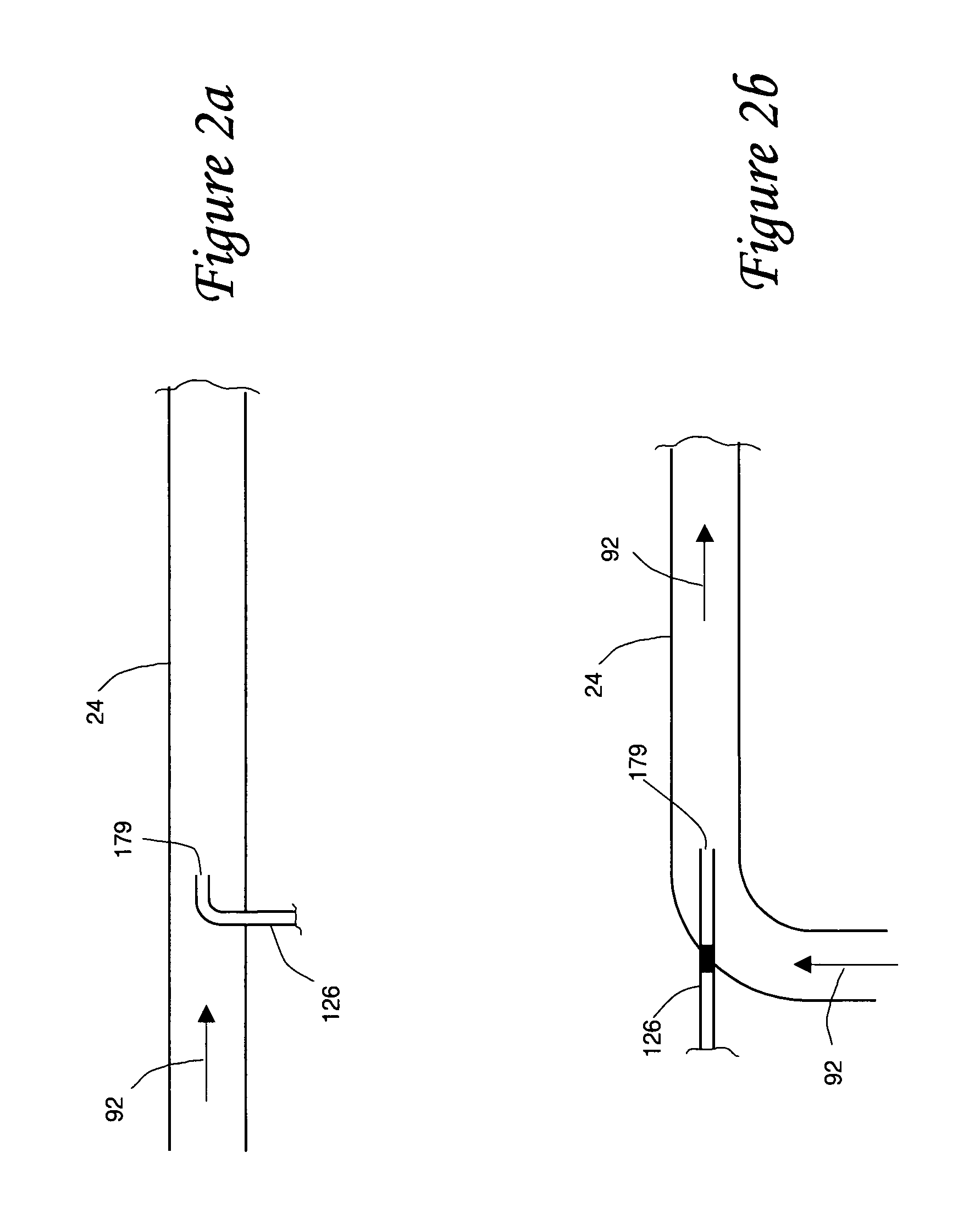Internal combustion engine/water source system
a technology of internal combustion engine and water source system, which is applied in the direction of machines/engines, mechanical equipment, non-fuel substance addition to fuel, etc., can solve the problems of loss of overall lubricant effectiveness, increase in mechanical wear, and excessive mechanical wear, so as to achieve the effect of reliable liquid water generation, improved operation, and large volume production of automotive vehicles
- Summary
- Abstract
- Description
- Claims
- Application Information
AI Technical Summary
Benefits of technology
Problems solved by technology
Method used
Image
Examples
example 1
[0044]ICE / water source system 10 operated at a sea level with ambient atmospheric pressure of 760 Torr and at an ambient temperature of 40 degrees Centigrade (104 degrees Fahrenheit). To limit ICE pumping loss ICE designers normally strive to keep the pressure drop in the exhaust duct 24 is very small. This means that the pressure inside the exhaust duct 24 is only slightly higher than the ambient atmospheric pressure. Therefore, the partial pressure of the water vapor in the ICE exhaust gases 92 is about 118 Torr and the dew point is 55 degrees Centigrade. Process stream 196 is drawn from exhaust gas stream 92 and cooled in heat exchanger 128 to a temperature of 60 degrees Centigrade. Because this temperature is above the dew point of the exhaust gas stream 92, no condensation is expected to occur before process stream 196′ reaches the compressor 134. One liter of the gases in process stream 196′ contains approximately 0.1 grams of water vapor. Compressor 134 is operated to draw th...
PUM
 Login to View More
Login to View More Abstract
Description
Claims
Application Information
 Login to View More
Login to View More - R&D
- Intellectual Property
- Life Sciences
- Materials
- Tech Scout
- Unparalleled Data Quality
- Higher Quality Content
- 60% Fewer Hallucinations
Browse by: Latest US Patents, China's latest patents, Technical Efficacy Thesaurus, Application Domain, Technology Topic, Popular Technical Reports.
© 2025 PatSnap. All rights reserved.Legal|Privacy policy|Modern Slavery Act Transparency Statement|Sitemap|About US| Contact US: help@patsnap.com



